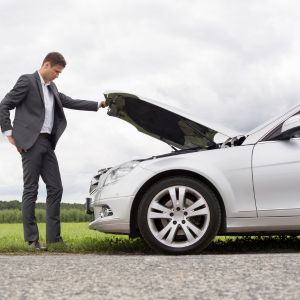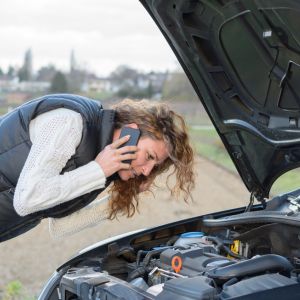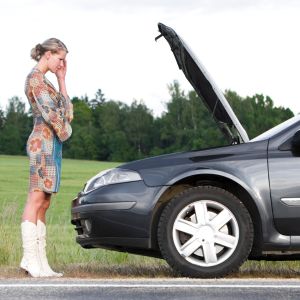Handle a car breakdown can be difficult and dangerous in severe weather. If your vehicle breaks down in hazardous conditions, such as a snowfall, it is imperative to stay inside and wait for help if it is safe to do so. By turning on the warning lights, you may increase visibility and make sure that other drivers can see your vehicle. If you must exit the car, dress appropriately for the weather and be alert to potential risks, including hypothermia or frostbite.
Find cover in a neighbouring building if you are unable to wait in your car safely. This is the best location to go. Calling for help or placing a roadside assistance call is possible if your mobile phone is fully charged.It’s crucial to have a winter emergency pack on hand that contains supplies like a blanket, food, water, and additional clothing in case of severe weather. You may help secure your safety in the event of handle a car breakdown in extreme weather by taking the proper steps and being ready.
If my automobile breaks down during severe weather, do I have to stay inside?

It depends on the specific weather conditions and the location of your car. Here are some guidelines to bear in mind:
- Generally speaking, it’s best to wait for the assistance inside of your vehicle if you’ve broken down on a busy street or motorway. You will be shielded from the elements and oncoming cars by doing this.
- The best way to stay cool on really hot days is to drink lots of water, open the windows, and turn on the air conditioner. It is recommended to seek safety in a nearby structure or an area of shade if remaining in the car is hazardous.
- Staying warm is crucial in below-freezing weather. By putting on a blanket or coat and activating the heater in your car, you can stay toasty. The best course of action is to remain indoors and try to conserve heat by limiting your activities if you can’t start the car.
- To avoid getting wet or slipping on the road with a lot of rain or snow, it is advisable to stay inside the vehicle. If you must get out of the automobile, drive carefully and pay attention to the weather.
- Decide on a course of action that will assure your safety after carefully considering the specific weather conditions. The most important thing to do if you ever feel uncomfortable is to call for help and wait for it.
- Cover any exposed skin and put on layers of clothing if you have to exit the car. Maintain an emergency supply kit in your car, along with a functioning spare tyre, jumper cables, a flashlight, a first aid kit, and other items.
Handle a car breakdown in extreme weather
Handle a car breakdown in extreme weather conditions can be stressful and potentially dangerous. Here are steps to follow if you have to handle a car breakdown in extreme weather:
- Stay Calm and Assess the Situation:
- Take a deep breath and try to remain calm. Panic can make the situation worse.
- Assess the severity of the weather conditions. If it’s extremely cold or hot, you’ll need to prioritize getting to safety quickly.
- Activate Hazard Lights:
- Turn on your hazard lights to make your vehicle more visible to other drivers, especially in low visibility conditions.
- Move to a Safe Location:
- If possible, try to move your vehicle to a safe location away from traffic. If you’re on a highway, try to reach the shoulder or a parking area.
- If it’s extremely cold, consider staying in your car for shelter until help arrives.
- Stay Inside the Vehicle (if applicable):
- In extremely cold conditions, staying in your car provides shelter from the elements. It’s usually safer to stay inside, especially if you have adequate clothing and blankets.
- Call for Assistance:
- Use your phone to call for help. If you have roadside assistance, call them. If not, you can contact a tow service or emergency services.
- Provide your exact location and any details about your situation, such as the condition of your car and the weather.
- Communicate Clearly:
- Provide as much information as possible to the person on the other end of the line. This includes your location, the problem with your car, and any specific needs you have (e.g., if you need a tow, a jump start, etc.).
- Stay Warm (in cold weather):
- If you’re in a cold climate, make sure to keep warm. Use any available blankets, clothing, or extra layers you have in the car. Run the engine periodically for short intervals to generate heat, but make sure the exhaust pipe is clear to prevent carbon monoxide poisoning.
- Stay Hydrated (in hot weather):
- If you’re in a hot climate, stay hydrated. Conserve water and avoid overexertion. Seek shade if possible.
- Signal for Help (if necessary):
- If you’re in a remote area and you believe someone might pass by, consider using a brightly colored cloth or distress signal to attract attention.
- Have Essential Supplies:
- It’s a good idea to keep an emergency kit in your car with items like blankets, extra clothing, non-perishable food, water, a flashlight, a first aid kit, and basic tools.
- Wait for Professional Help:
- Once you’ve contacted assistance, be patient. Help might take some time to arrive, especially in severe weather conditions.
Remember, safety is the top priority. If conditions are extremely hazardous and staying in your car is not safe, consider seeking shelter elsewhere, but make sure to leave a note in your vehicle indicating where you’ve gone. Always trust your instincts and prioritize your well-being.
What extraordinary safety measures should I employ if my automobile breaks down in severe weather?

If your car breaks down in harsh weather conditions, such as heavy rain, snow, or excessive heat, it is crucial to take safety precautions. Here are some recommendations for the best safety measures to take:
- It is advised that you wait for help to arrive inside your car. The weather cover provided by your car may also increase your visibility to rescuers.
- In order to request assistance and make your car more visible to other drivers, turn on your warning lights.
- If you need to get out of your car, display a bright piece of clothing or flares on the road to signal for help.
- Unsuitable attire Put on thick clothing, a hat, and gloves if you breakdown in the cold; sunscreen if you break down in the heat.
- Keep a winter survival kit in your car if you live somewhere cold. The kit should contain supplies like food, water, blankets, and a shovel.
- Keep your phone charged, and bring a portable charger so you can call for assistance if necessary.
- Keep an eye on your health: By drinking water and finding shade if you can, you can stay hydrated and guard against hypothermia or heat stroke.
- Equipment like an ice scraper, a snow shovel, and a tow line can also be a good idea.
Keep in mind that it is crucial to be safe and composed when the weather is severe. Call for assistance if you experience a breakdown, then take the utmost safety procedures to keep yourself safe until aid arrives.
Frequently Asked Questions
Q1. What should I do if my automobile breaks down during a particularly chilly day?
Ans: First, try to move the car to a position that is secure and away from traffic. You should call 911 and turn on your emergency flashers. Reduce the heat while driving and stay warm by wrapping up in blankets or other warm clothing.
Q2. How can I be secure while awaiting assistance when my automobile breaks down in sweltering heat?

Ans: Keep the windows slightly open and the interior of the car cool by using a parasol or other covering. If you have to get out of the car, wear light-coloured clothing, a hat with a wide brim and remain out of the sun. Drink a lot of fluids and make frequent stops to relax in the shade.
Q3. What are some recommendations for avoiding a car breakdown in severe weather?
Ans: Make sure your car gets regular maintenance and servicing from a qualified mechanic. Check the levels of the coolant and oil, and look for signs of tyre and brake wear.
Q4. What should I keep in my car’s emergency supply bag if I break down in severe weather?
Ans: A first aid pack, jumper cables, flashlight, tyre jack, fire extinguisher, blanket, warm cap and gloves, water, a road flare, and non-perishable snacks should all be included in a basic emergency bag.

